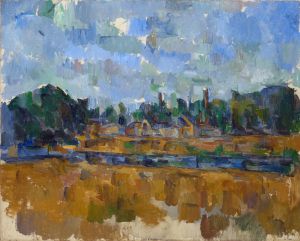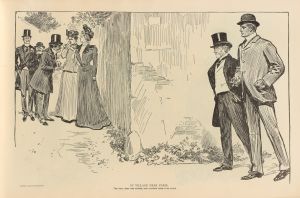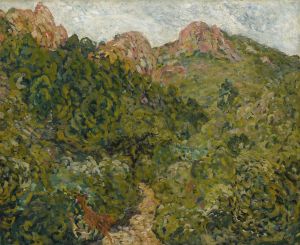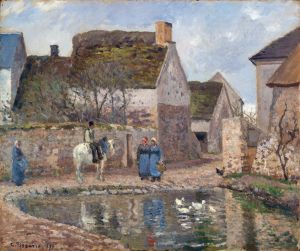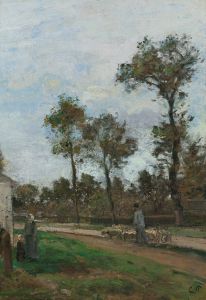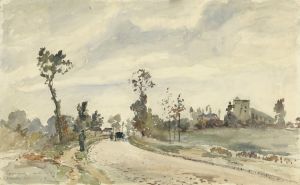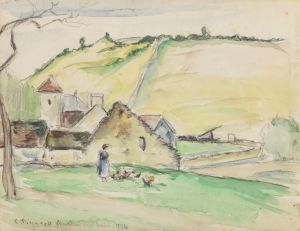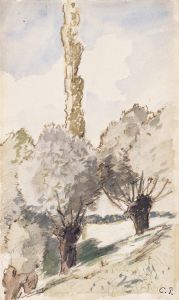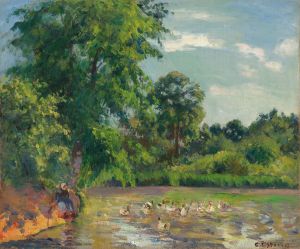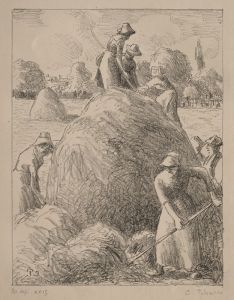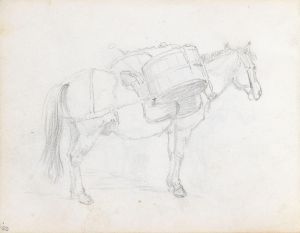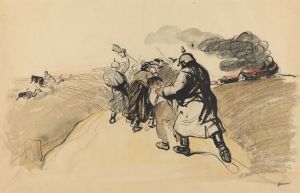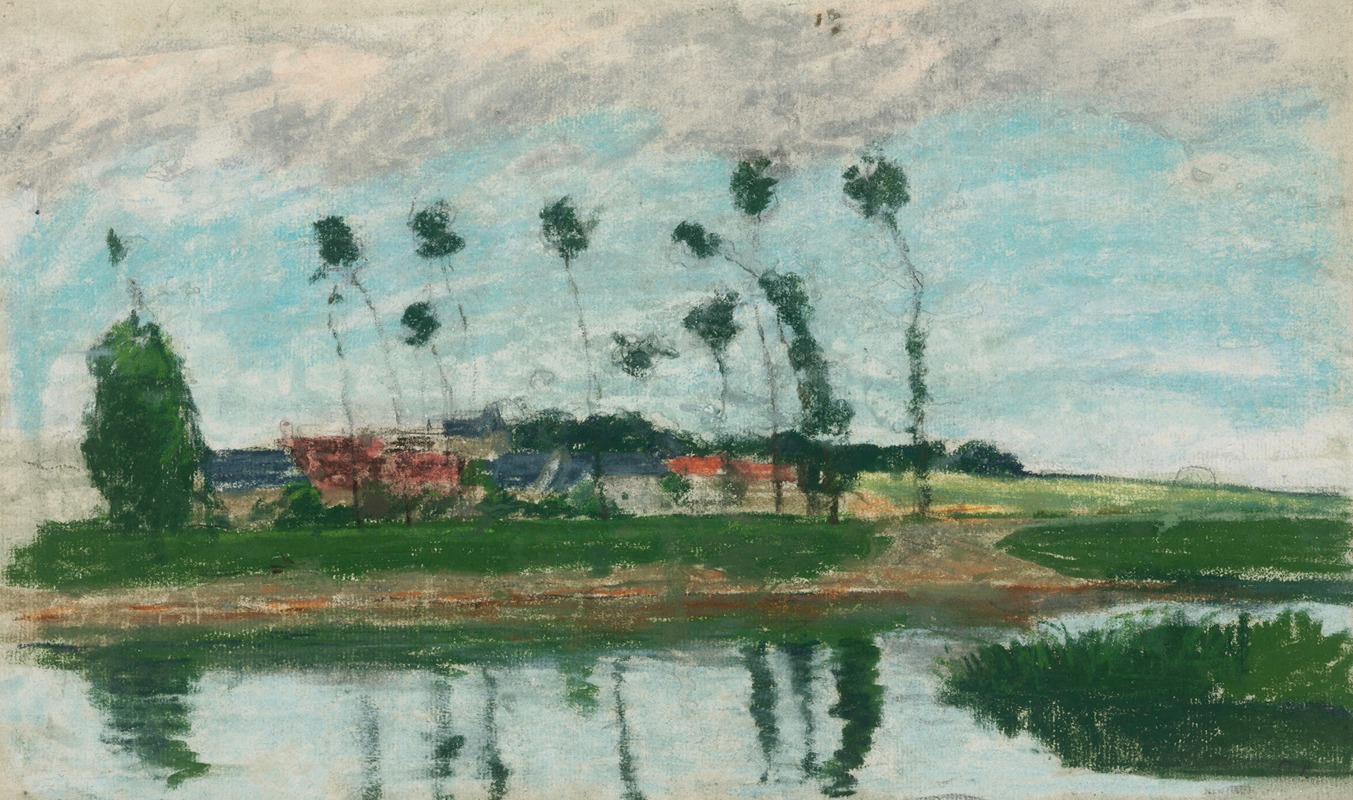
Village au bord d’un étang
A hand-painted replica of Camille Pissarro’s masterpiece Village au bord d’un étang, meticulously crafted by professional artists to capture the true essence of the original. Each piece is created with museum-quality canvas and rare mineral pigments, carefully painted by experienced artists with delicate brushstrokes and rich, layered colors to perfectly recreate the texture of the original artwork. Unlike machine-printed reproductions, this hand-painted version brings the painting to life, infused with the artist’s emotions and skill in every stroke. Whether for personal collection or home decoration, it instantly elevates the artistic atmosphere of any space.
"Village au bord d’un étang" is a painting by the renowned French artist Camille Pissarro, a pivotal figure in the Impressionist movement. Born on July 10, 1830, on the island of St. Thomas in the Danish West Indies, Pissarro moved to Paris in 1855, where he became an influential artist and a central figure in the development of Impressionism.
Pissarro's work is celebrated for its vibrant depiction of rural and urban life, often capturing the subtle nuances of light and atmosphere. "Village au bord d’un étang," which translates to "Village by a Pond," exemplifies his dedication to portraying the serene beauty of the countryside. This painting is a testament to Pissarro's skill in capturing the essence of rural landscapes, a subject he frequently explored throughout his career.
The painting depicts a tranquil village scene, characterized by its harmonious composition and the delicate interplay of light and shadow. Pissarro's brushwork is both meticulous and expressive, capturing the reflections on the water and the lush greenery surrounding the pond. His use of color is particularly noteworthy, as he employs a palette that conveys the natural beauty of the scene while also imbuing it with a sense of warmth and tranquility.
Pissarro's approach to painting was deeply influenced by his commitment to working en plein air, or painting outdoors. This method allowed him to observe and capture the changing effects of light and atmosphere directly from nature. "Village au bord d’un étang" reflects this practice, as the painting exudes a sense of immediacy and authenticity that is characteristic of Pissarro's work.
Throughout his career, Pissarro was known for his collaborative spirit and his role as a mentor to other Impressionist artists, including Paul Cézanne and Claude Monet. His dedication to the Impressionist movement was unwavering, and he participated in all eight of the Impressionist exhibitions held between 1874 and 1886. Pissarro's influence extended beyond his own work, as he played a crucial role in shaping the direction of modern art.
"Village au bord d’un étang" is an example of Pissarro's ability to capture the quiet beauty of everyday life. His paintings often reflect a deep appreciation for the simplicity and tranquility of rural settings, and this work is no exception. The painting invites viewers to immerse themselves in the peaceful ambiance of the village, offering a glimpse into the serene world that Pissarro so masterfully depicted.
Today, Camille Pissarro is celebrated as one of the leading figures of the Impressionist movement, and his works continue to be admired for their innovative approach to capturing light and atmosphere. "Village au bord d’un étang" remains a significant piece within his oeuvre, exemplifying the qualities that have made Pissarro's art enduringly popular and influential.





